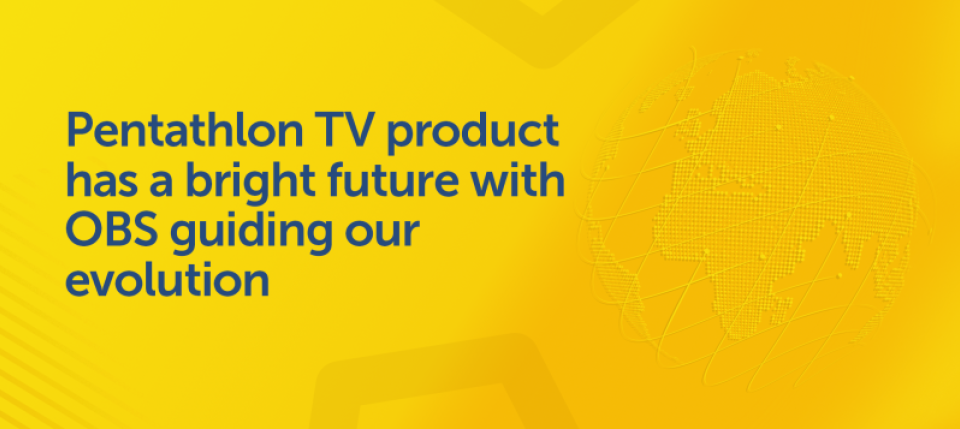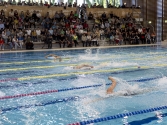UIPM Secretary General’s Message: Pentathlon TV product has a bright future with OBS guiding our evolution

I am excited to bring you all an update on some pivotal developments in the evolution of our Modern Pentathlon TV product. But first it is important to set the context of the historic relationship with one of UIPM’s key stakeholders.
The partnership between UIPM and Olympic Broadcasting Services (OBS) has always been cordial, respectful and productive – and a little complex, at times. This is inevitable when you consider the number of changes that have taken place in the Olympic Pentathlon since the 1990s, and the driving forces behind those changes.
In terms of TV and media, the driving force can be summarised in one word: audience. It has been important to service existing Olympic Games audiences with a continuously improving product. But it has been – and will continue to be – even more important that we try to attract new audiences when Pentathlon sits in the shop window of the greatest sporting event on the planet.
So why has it been complex at times?
I recall one difficult moment during the 2012-2016 Olympic cycle, when OBS produced a video consisting entirely of the worst mishaps suffered by athletes in the Riding element of Modern Pentathlon over the years.
It was upsetting for our community to be subjected to this kind of ‘blooper reel’, and I wrote a letter to the OBS CEO expressing our dissatisfaction, to which they responded with an explanation detailing the number of clicks and views on the video, which they felt was indicative of a positive response from audiences. When our mission is to attract new audiences to our sport, it is hard to argue with such logic.
OBS, as the name suggests, are masters of the art of Olympic broadcasting and we listen to their feedback, even when it hurts. In 2014, an OBS team visited our Pentathlon World Cup in Rome (ITA), when we were testing the new Fencing Bonus Round. Their chief content manager used the word “disconnected” to describe the status of our sport and the sequence of disciplines at that moment, which provided us with a clear direction of travel.
After Rio 2016, where Pentathlon for the first time had four disciplines (only missing Swimming) in one Olympic venue, a more connected sport was built around the concept of a Pentathlon Stadium with a 1 sport / 5 discipline / 5 hours programme.
The vision of 5-in-1 was realised in Tokyo, a huge improvement. While this more compact and more understandable concept was well received by broadcasters, it was obvious that a five-hour duration continued to limit the number of networks that would televise an entire Pentathlon live on air.
Another more TV-friendly product was born at the end of 2021 with the new 90-minute format, which debuted in the 2022 season with a Semi-final/Final format that immediately intensified the competition. Every ‘taker’ of our TV show was finally able to show an entire Pentathlon without cutting out a single discipline.
During those first two years of experience, the 90-minute product improved a lot, and in 2024 so far, our number of TV broadcasters has increased and the feedback has become more and more positive. That said, further adjustments will need to be made later this year for the consideration of UIPM Congress, as there are ways we can reduce the number of competition days and lessen the burden on athletes during the intense World Cup season.
And now we look ahead to the Los Angeles 2028 cycle and the most radical transformation so far!
The new TV product took further shape during a constructive meeting with a comprehensive OBS programming team and senior leadership in their Madrid headquarters on March 12.
One of their many intelligent suggestions related to the order of the event, to start in LA with Obstacle, marking the dawn of a new era and introducing Pentathlon with a series of short and thrilling head-to-head races to grab the attention of new audiences.
Next comes the new Fencing with single-elimination format that our NFs are currently testing, followed by an innovative change to the operation of the Swimming event that is designed to appeal to viewers but is also sensitive to athletes. The idea is that athletes start Swimming with an overall time handicap from points gained in Obstacle and Fencing – something that had already been discussed at times within our community.
The detail has to be worked out by our internal team and committees, and there are various options and ways to do this, but a Swimming handicap means more relevant races, which means viewers continue to follow the overall storyline without switching off. And then we finish with our dramatic Laser Run as per the status quo.
Everything suggested by OBS is subject to a democratic process, culminating in the need for approval by UIPM Congress. As a first step, the results of this OBS meeting were reported back to the Executive Board where they earned unanimous support. The IOC is also aligned to OBS in pushing for a more exciting and presentable Pentathlon TV product in LA28.
So what are the next steps? Once the testing of the new Fencing format is complete, relevant procedures will be followed in order to present to Congress the necessary adjustments, keeping in mind the need to minimise impact on athletes’ training and ensure maximum accessibility for National Federations to develop the sport.
Having come on a long shared journey with OBS, in this meeting I was amazed by their vision and pragmatic way of thinking and doing. This is based on real and profound Olympic broadcasting and distribution experience, as well as a flexibility in understanding our sport’s charm and complexity, while respecting that the benefits to athletes should outweigh any adjustments that may be inconvenient or disruptive.
We are enjoying working with the OBS team and appreciate their guidance and patience to believe in our sport’s future growth potential, along with all of our innovations and improvements.





